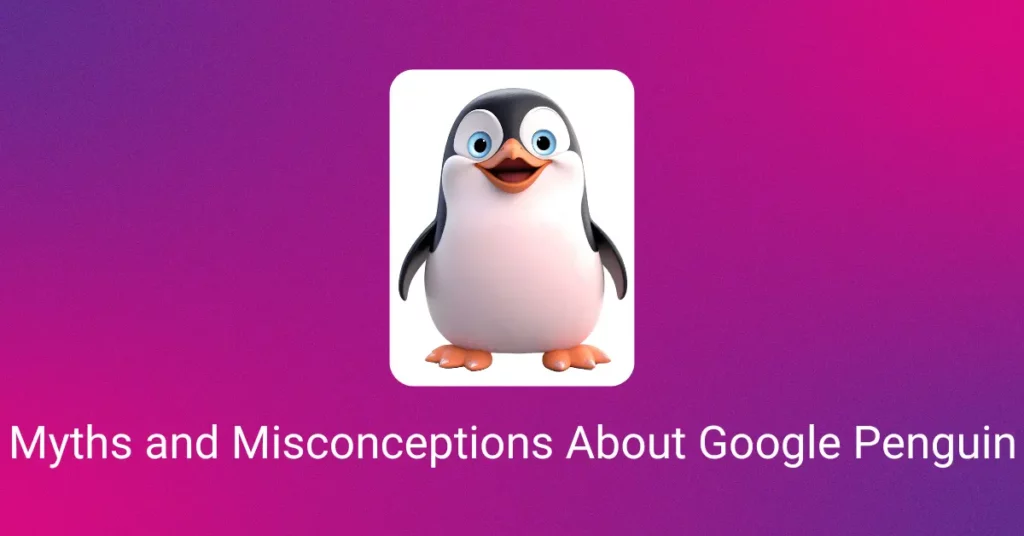There are numerous Google Penguin myths emerging online, many of which have even tricked skilled SEO professionals. Sorting out fact from fiction can be challenging, but we are busting a few of the most popular myths and misconceptions surrounding the update in this guide.
#Myth 1: Penguin Is A Penalty
One of the most common misconceptions regarding the Google Penguin algorithm is that it is a penalty. It is sometimes referred to as a penalty or “manual action” implemented by Google. However, Penguin is entirely algorithmic. This means that Google cannot manually enforce or lift it.
Though a penalty and an algorithm update could decline your rankings, there are significant differences between the two:
A penalty is imposed when a member of the Google webspam team takes a manual action on a specific domain after reacting to a flag report and conducting an inquiry. The Google Search Console will notify you about the penalty.
When you get hit by a manual action, along with evaluating your backlinks and removing spammy links, you must also submit a reconsideration request to the webspam team. Google will lift the penalty if your efforts are efficient. If not, you will have to re-evaluate your backlink profile.
A Penguin downgrade is an algorithmic action that does not involve a member of the Google team. If your site gets affected, you will not be notified. Previously, you would have to wait for a refresh or algorithm change, but Penguin now operates in real-time so that you can resolve issues quickly.
#Myth 2: If Penguin Hits Your Website, Google Will Notify You
We will clarify This common myth about the Google Penguin algorithm in this guide! Generally, many people think that if the algorithm affects a website’s rankings, they will receive a notification from the Search Console. This, unfortunately, is not the case. The Search Console will notify you if your rankings have dropped due to the Penguin application. This indicates the differences between an algorithm and a penalty. You will receive a notification in the case of a penalty. However, the process for recovering from a Penguin is quite similar to that of recovering from a penalty.
#Myth 3: The Only Way to Reverse a Penguin Hit is to Disavow Bad Links
Although this tactic will eliminate many low-quality links, it is extremely time-consuming and requires a lot of effort. Google Penguin algorithm considers the percentage of high-quality links against spammy links. Therefore, it might be worthwhile to focus on boosting your website’s high-quality links rather than manually eliminating those low-quality links. This will result in a greater influence on the percentage that Penguin accounts for. With this strategy, you can prioritize link-building to increase your website’s credibility and search engine visibility.
#Myth 4: You Can’t Recover Penguin
It is possible to recover from the effects of Google Penguin. It is feasible, but it will necessitate some prior experience dealing with the fickle nature of Google algorithms. The best strategy to overcome Penguin’s adverse impacts is to remove all the present links on your website and start gaining fresh, organic links from reputable sources. The more of these high-quality links you obtain, the easier it will be to free your website from Penguin’s grasp. With this, your website builds a stronger and more authoritative online presence. When it comes to search engine optimisation, remember that patience and persistence are key!
Popular Searches
How useful was this post?
0 / 5. 0














